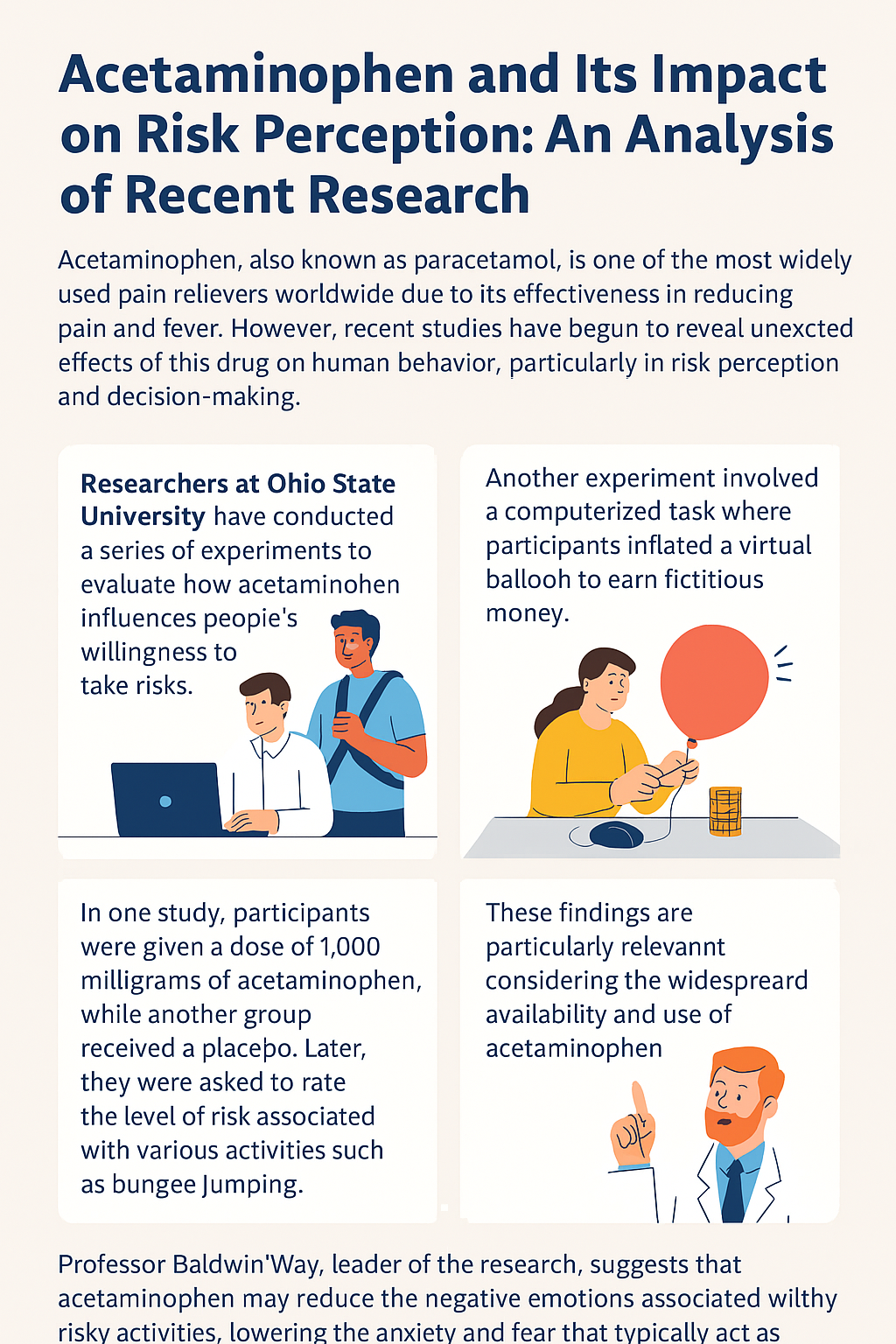Acetaminophen and Its Impact on Risk Perception: An Analysis of Recent Research

Paracetamol, also known as acetaminophen, is one of the most widely used pain relievers worldwide due to its effectiveness in reducing pain and fever. However, recent studies have begun to reveal unexpected effects of this drug on human behavior, particularly in risk perception and decision-making.
Researchers at Ohio State University have conducted a series of experiments to evaluate how acetaminophen influences people’s willingness to take risks. In one of these studies, participants were given a dose of 1,000 milligrams of acetaminophen, while another group received a placebo. Later, they were asked to rate the level of risk associated with various activities, such as bungee jumping, betting a significant portion of their salary on a sporting event, or driving without a seatbelt. The results showed that those who had taken acetaminophen tended to perceive these activities as less risky compared to the placebo group.
Another experiment involved a computerized task where participants inflated a virtual balloon to earn fictitious money. Each additional inflation increased the potential reward but also the risk of the balloon bursting, which would result in the loss of accumulated earnings. It was observed that individuals under the influence of acetaminophen inflated the balloon more times than those in the control group, indicating a greater propensity to take risks.
Professor Baldwin Way, leader of the research, suggests that acetaminophen may reduce the negative emotions associated with risky activities, lowering the anxiety and fear that typically act as brakes when making risky decisions. This effect may be due to the drug's ability to dampen emotional responses, leading to a reduced perception of danger and, consequently, a greater willingness to take risks.
These findings are particularly relevant considering the widespread availability and use of acetaminophen. It is estimated that approximately 25% of the U.S. population consumes this analgesic weekly, suggesting that a significant number of people may be experiencing subtle changes in their risk perception and behavior without realizing it.
It is important to note that while these studies provide valuable information on the possible psychological effects of acetaminophen, more research is needed to fully understand the underlying mechanisms and long-term implications. In the meantime, healthcare professionals and consumers should be aware that, in addition to its well-known benefits for pain relief, acetaminophen could influence aspects of behavior related to risk assessment and decision-making.













LEAVE A COMMENT: